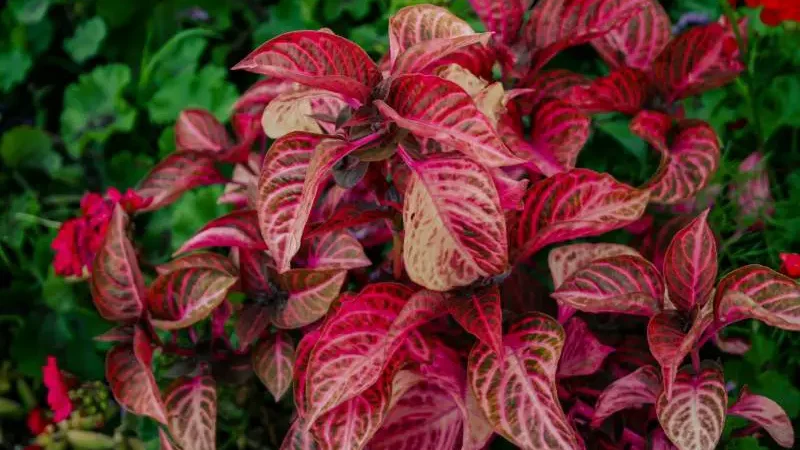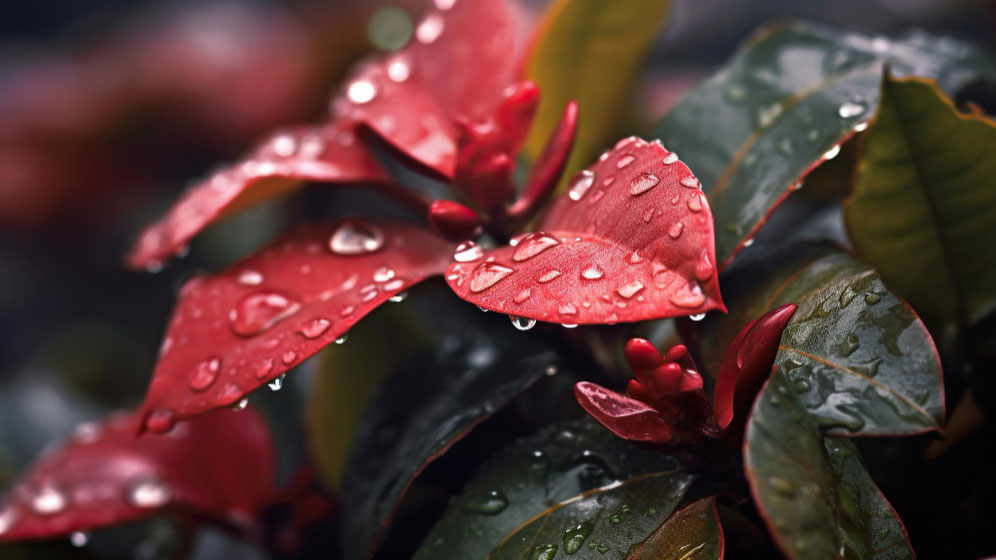Why Is My Garden Croton Drooping? (Top Reasons)
Crotons present a natural artistic look, especially when planted or placed in strategic locations. However, the plant is susceptible to water, soil conditions, and light conditions. We know that for any plant to thrive, watering is a must.
However, croton leaves respond in different ways to the amount of moisture you expose them to.

They also do well in bright rooms and outdoors, but when there’s not enough light, the foliage does not give the artistic outdoor color.
These are tropical plants and do well in warm temperatures.
They are known to be very “choosy”, and when exposing them to moisture, you might notice the garden croton drooping, and here is why.
Reasons Why Garden Crotons Are Drooping
Crotons are easy to grow and maintain once you expose them to the right conditions. Any imbalance results in their leaves wilting and eventually dropping off. You do not have to wait for plant care drooping to happen.
The solution to the problem is within your reach.
You do not need special skills to salvage your garden or indoor crotons. Drooping and wilting are signs that something is wrong with your plants, and you need to act.
Here are some reasons why your garden croton leaves drooping.
Change Of Location
Change of location, especially for potted croton plants, could cause them to droop. This happens when the new light level has been recently changed. This is normal, and once they get accustomed to the new place, the leaves and buds will recover back to normal.
Croton movement might affect the soil structure.
Too much shaking makes the soil dry, resulting in less water and nutrients not reaching the stem and leaves. When moving potted plants, ensure the pots do not shake as this compacts the soil.
Water
The amount of water you use is vital for a healthy croton garden. Croton’s watering schedule is different from most garden plants. Too much water can make their roots rot, resulting in leaves drooping.
Avoid watering that forms a pool in the pot top or the bottom tray. It does not only make the roots rot, but if left unchecked, it can be home to harmful organisms. A pebble tray will help put over-watering your plants in check.
Denying your croton enough water is another cause of drooping. Make sure the soil is not waterlogged or too dry.
The moisture in the soil has to be right at all times. Avoid leaving the garden or flower pot to run dry since it is a surefire way to speed up drooping.
Humidity And Heat
Crotons are tropical plants, and their well-being depends on humidity and warmth. When you expose the plants to extreme cold, the leaves droop and eventually fall off. This can be caused by doors left open or air ducts next to the plant.
Dropping is caused by a change in temperature in a short time. Once exposed, you can be able to tell the conditions are extreme. As an observer, when you notice the leaves becoming tender and dull, it is time to act.
This saves them from droopy or wilting.
Light
Light plays a major role in the life of croton plants. Placing potted crotons in dark corners of the house or under trees in the garden spells doom for the leaves. However, this depends on the croton variety.
Some varieties require more light than others. When planted in dark or sheltered corners, the croton stems and leaves tend to be weak.
They bend towards the light source in a drooping manner. Lack of sufficient light prevents photosynthesis, a vital process in plant growth.
Pests And Diseases
When you notice your croton is drooping, do not rule out the presence of pests and diseases. A simple inspection under the leaves can reveal whether the Croton plant is infested by pests.
Those tiny insects underneath the leaves could be the cause of the Croton drooping. Always inspect the plant thoroughly to ensure no organisms are hiding in the croton. This can save you the agony of replacing your plants with new ones to contain the resulting infections.
It is better to keep them safe than replace them with new ones. The good thing about crotons is their toughness. They can droop and shed leaves but are hard to die.
However, when the leaves fall off, they make your garden appear unkempt and dead.
To maintain the beauty of the garden, you need to keep reviving the Croton garden, and here is how.
How To Revive Your Croton Garden
Crotons are grown for their artistic look leaves. However, when this exquisite foliage fades, the beauty of the plant disappears.
The first sign of the plant drooping is the lack of the plant’s brightening aspect. Drooping is a way the Croton plant is telling you something is not right. Once the signs are there, it is about time to take action.
Given the numerous reasons for croton plant drooping, you need to address each separately. Plants may shed all their leaves, leaving the parched stems.
Gently scratch the stem with your fingernail, and if they are still green under the bark, your croton is still alive.
This is the starting point for reviving the plants.
Adding The Right Amount Of Water And Manure
The revival process starts with watering. The soil has to be well aerated, and the water should seep slowly until the bottom tray is wet. If need be, add more manure for additional nutrients.
Sand or peat is the best soil since it drains well. If your drooping croton is planted outdoors, at least an inch of water every week is enough. If you are the busy type, drip irrigation will work well.
However, during the rainy season, you do not require irrigation.

Exposure To Sunlight
Croton plants require ample light, and this should be a no-brainer. However, if the leaves start curling or twisting, they sign excess manure or fertilizer. Once this happens, reduce the amount of manure and expose them to direct sunlight.
Excessive direct sunlight is also not good for your croton. Your plant will be burned and scorched by this, resulting in browned, wilted, and drooping leaves.
Sunburns are more likely to affect the lighter-colored crotons than their darker counterparts. Just position your croton in an area with ample or filtered light. This would be in front of a window with an east or west-facing view in your home.
You’ll notice that this will bring the leaves back to normal. The first thing to do when crotons start to droop is to assess the amount of light reaching them. Ensure they receive at least nine hours of light.
This is enough to enable the plant to utilize the nutrients it receives in a day.
Disease Diagnosis And Treatment
It is important to identify disease attacks as soon as possible to prevent damage to your healthy croton garden and croton drooping. Most of these diseases affect the overall plant vitality and cause drooping and other problems.
A spider mite causes yellowing and eventual dropping of leaves. Miticides can clear these, and restoration of the garden takes a few days. However, using pesticides, you can clear the pests attached to the roots, stems, and leaves.
Consider sterilizing your garden tools if your garden becomes infected. These could be spreading diseases and infections. The spreading occurs during pruning and cuttings.
This also applies to spacing; to avoid drooping and the spread of diseases in your garden, the distance from one croton to the other should be at least 3 feet.
Change Of Location Aids In Croton Drooping
If you recently changed your potted croton location and notice signs of drooping, give the plant time to adjust to the new environment. So, don’t be shocked if it loses almost all of its leaves.
Additionally, if the change in location has an effect on the availability of light, this response may be quite unfriendly.
Many times the leaves drop off, droop, and turn completely yellow. It’s still pretty common, though. You could say that your croton is exhibiting tantrum-throwing behavior in this manner.
The drooping might be temporal, and to revive it, you need to give it time to acclimatize. When you change the Crotons’ location, the temperature and humidity may be different from the previous location.
The plant will naturally sense the change and respond by drooping. This should not scare you; the plant will revive itself as long as you maintain the previous location conditions.
And once your croton has grown accustomed to the new location, the foliage will recover.
Conclusion
Croton gardens are easy to maintain, and drooping is part of their growth when they don’t meet some conditions. They warn you that something is not right and needs attention.
It is crucial to learn their behavior and attend to them to keep your garden or potted plants healthy and beautiful. For additional sparkle to your indoor croton plants, use distilled water to mist the foliage twice a month.
When misting, ensure the water is at room temperature. This not only spices them up but maintains the required indoor humidity.